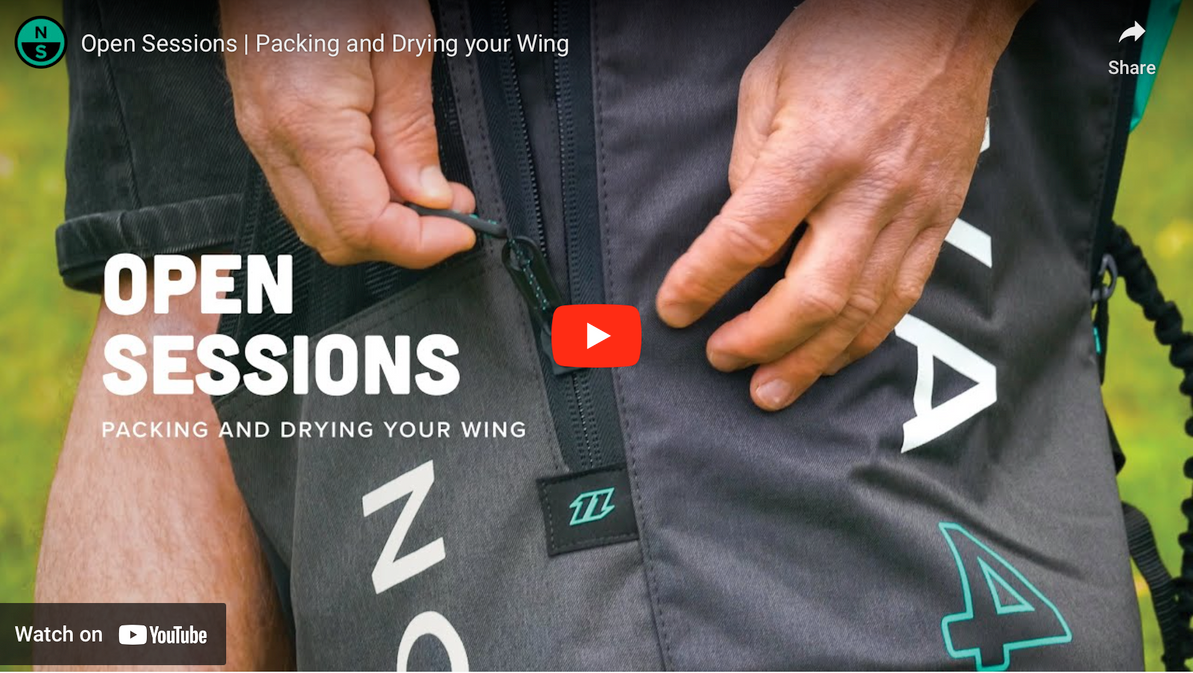Drying and Packing Your Wing After a Session | Why It's Important
Why Dry Your Wing?
It's a best practice to always dry your wing before packing it away. With the thrill of winging sports, it's common to come off the water with a wet wing. Sometimes due to a hurried schedule or unexpected downpour, immediate drying isn't feasible. In such cases, roll it up loosely and place it in its bag. However, once home, ensure you hang it from its front handle in a ventilated area to drip dry.
The Ideal Drying Scenario
After exiting the water, the first step is to find a good clear space. Flip the wing over so it's upside down and fasten it to a sturdy object, like a park bench, using the front wrist lash. To prevent flapping, you might want to adjust the leash's length.
Why Not Pack a Wet Wing?
Packing a wet wing isn't just about inconvenience. If tightly packed and stored for a prolonged time, your wing might:
- Develop an unpleasant odor.
- Exhibit color migration, where darker shades stain lighter parts of the canopy.
Packing According to Handle Type
There are primarily two handle types on the market: soft handles and rigid handles.
Soft Handles:
For soft handles, deflate the wing, fold it, and roll it up with handles on the inside.
Rigid Handles:
For rigid handles, like the one demonstrated today, position the wing downwind. Ensure the wing claps inside out so the rigid handles won't rub against the canopy. Now, start rolling from the side facing you, ensuring the handles stay outside.
Special Mention: Windows and Valves
When rolling, avoid folding right through the windows. Aim to make the fold between handles a fold point. While dealing with valves, remember different wings have varied configurations. Some, like the North Nova Wing, come with main inflation valves on the Leading Edge and one-pump hoses with pinch clips.
Storing the Wing: A Brief Overview
Now, to the bag. Some bags come with vents, allowing the wing to breathe. They also have a drain hole for any remaining moisture. A special pocket at the bottom of the bag helps store the 'messy end' of the wing. When placing the wing, ensure the leading edge goes into this pocket.
Use only bags with high-quality zippers, preferably plastic ones, to avoid corrosion. An external pocket is ideal for storing the part of your leash that remains wet.
Recent Posts
-
2025 F-One Rocket Surf Prone, Rocket Wing Crossover, and Rocket Midlength Boards
Mid-length foilboards are rapidly growing in popularity and could soon dominate the market, especi …27th Mar 2025 -
Slingshot One-Lock System Overview - Gimmick or High Performance?
You've probably heard about Slingshot's toolless One-Lock System by now. You get to the beach, you …27th Mar 2025 -
Slingshot One-Lock Tips and Tricks
Slingshot's One-Lock system is an interesting new concept in foil assembly with the goal to elimin …27th Mar 2025




